Investigation of the Resistivity and Emissivity of a Pellicle Membrane for EUV Lithography
Abstract
:1. Introduction
2. Theoretical Approach
2.1. Emissivity and the Lorentz–Drude Model
2.2. Thin Film Resistivity Model
3. Experimental Methods
3.1. Sample Preparation and Analysis
3.2. Heat Load Test
4. Results and Discussion
4.1. Resistivity Parameter Analysis
4.2. Resistivity and Emissivity
5. Conclusions
Author Contributions
Funding
Institutional Review Board Statement
Informed Consent Statement
Data Availability Statement
Conflicts of Interest
References
- Mastenbroek, M. EUV Industrialization High Volume Manufacturing with NXE3400B. In SPIE 10809, Proceedings of the International Conference on Extreme Ultraviolet Lithography, Monterey, CA, USA, 17–20 September 2018; Ronse, K.G., Hendrickx, E., Naulleau, P.P., Gargini, P.A., Itani, T., Eds.; SPIE Press: Bellingham, WA, USA; p. 1080904. [CrossRef]
- Miyazaki, J.; Yen, A. EUV Lithography Technology for High-volume Production of Semiconductor Devices. J. Photopolym. Sci. Technol. 2019, 32, 195–201. [Google Scholar] [CrossRef] [Green Version]
- Wurm, S. EUV lithography: Progress, Challenges, and Outlook. In SPIE 9231, Proceedings of the 30th European Mask and Lithography Conference, Dresden, Saxony, Germany, 24–25 June 2014; Behringer, U.F.W., Ed.; SPIE Press: Bellingham, WA, USA; p. 923103. [CrossRef]
- Kim, S.-S.; Chalykh, R.; Kim, H.; Lee, S.; Park, C.; Hwang, M.; Park, J.-O.; Park, J.; Kim, H.; Jeon, J.; et al. Progress in EUV Lithography toward Manufacturing. In SPIE 10143, Proceedings of the Extreme Ultraviolet (EUV) Lithography VIII, San Jose, CA, USA, 26 February–2 March 2017; Panning, E.M., Ed.; SPIE Press: Bellingham, WA, USA; p. 1014306. [CrossRef]
- Shroff, Y.A.; Leeson, M.; Yan, P.-Y.; Gullikson, E.; Salmassi, F. High transmission pellicles for extreme ultraviolet lithography reticle protection. J. Vac. Sci. Technol. B Microelectron. Nanometer Struct.-Process. Meas. Phenom. 2010, 28, C6E36–C36E41. [Google Scholar] [CrossRef]
- Park, E.-S.; Shamsi, Z.H.; Kim, J.-W.; Kim, D.-G.; Park, J.-G.; Ahn, J.-H.; Oh, H.-K. Mechanical deflection of a free-standing pellicle for extreme ultraviolet lithography. Microelectron. Eng. 2015, 143, 81–85. [Google Scholar] [CrossRef]
- Pollentier, I.; Lee, J.U.; Timmermans, M.; Adelmann, C.; Zahedmanesh, H.; Huyghebaert, C.; Gallagher, E.E. Novel Membrane Solutions for the EUV Pellicle: Better or Not? In SPIE 10143, Proceedings of the Extreme Ultraviolet (EUV) Lithography VIII, San Jose, CA, USA, 26 February–2 March 2017; Panning, E.M., Ed.; SPIE Press: Bellingham, WA, USA; p. 101430L. [CrossRef]
- Lafarre, R.; Maas, R. Progress on EUV Pellicle and Pellicle Infrastructure for High Volume Manufacturing. In SPIE 11609, Proceedings of the Extreme Ultraviolet (EUV) Lithography XII, Online, CA, USA, 22–27 February 2021; Felix, N.M., Lio, A., Eds.; SPIE Press: Bellingham, WA, USA; p. 1160912. [CrossRef]
- Kim, J.; Kim, H.; Ahn, J. Impact of residual stress on the deflection of extreme ultraviolet pellicles. J. Micro/Nanopatterning Mater. Metrol. 2021, 20, 024401. [Google Scholar] [CrossRef]
- Zoldesi, C.; Bal, K.; Blum, B.; Bock, G.; Brouns, D.; Dhalluin, F.; Dziomkina, N.; Espinoza, J.D.A.; de Hoogh, J.; Houweling, S.; et al. Progress on EUV Pellicle Development. In SPIE 9048, Proceedings of the Extreme Ultraviolet (EUV) Lithography V, San Jose, CA, USA, 23–27 February 2014; Wood II, O.R., Panning, E.M., Eds.; SPIE Press: Bellingham, WA, USA; p. 90481N. [CrossRef]
- Modest, M.F.; Mazumder, S. Radiative Heat Transfer; Academic Press: Cambridge, MA, USA, 2013. [Google Scholar]
- Goldfarb, D.L.; Bloomfield, M.O.; Colburn, M. Thermomechanical Behavior of EUV Pellicle under Dynamic Exposure Conditions. In SPIE 9776, Proceedings of the Extreme Ultraviolet (EUV) Lithography VII, San Jose, CA, USA, 21–25 February 2016; Panning, E.M., Ed.; SPIE Press: Bellingham, WA, USA; p. 977621. [CrossRef]
- Van Zwol, P.J.; Vles, D.F.; Voorthuijzen, W.P.; Péter, M.; Vermeulen, H.; van der Zande, W.J.; Sturm, J.M.; van de Kruijs, R.W.E.; Bijkerk, F. Emissivity of freestanding membranes with thin metal coatings. J. Appl. Phys. 2015, 118, 213107. [Google Scholar] [CrossRef]
- Van Zwol, P.J.; Nasalevich, M.; Voorthuijzen, W.P.; Kurganova, E.; Notenboom, A.; Vles, D.; Peter, M.; Symens, W.; Giesbers, A.J.M.; Klootwijk, J.H.; et al. Pellicle Films Supporting the Ramp to HVM with EUV. In SPIE 10451, Proceedings of the Photomask Technology 2017, Monterey, CA, USA, 11–14 September 2017; Buck, P.D., Gallagher, E.E., Eds.; SPIE Press: Bellingham, WA, USA; p. 104510O. [CrossRef]
- Pollentier, I.; Timmermans, M.Y.; Huyghebaert, C.; Brems, S.; Gallagher, E.E. The EUV CNT Pellicle: Balancing Material Properties to Optimize Performance. In SPIE 11323, Proceedings of the Extreme Ultraviolet (EUV) Lithography XI, San Jose, CA, USA, 23–27 February 2020; Felix, N.M., Lio, A., Eds.; SPIE Press: Bellingham, WA, USA; p. 113231G. [CrossRef]
- Howell, J.R.; Siegel, R.; Mengűҫ, M.P. Thermal Radiation Heat Transfer, 5th ed.; CRC Press: London, UK, 2011; pp. 460–466. [Google Scholar]
- Planck, M. The Theory of Heat Radiation; P. Blakiston’s Son & Co.: Philadelphia, PA, USA, 1914. [Google Scholar]
- Wooten, F. Optical Properties of Solids; Academic Press: New York, NY, USA, 2013. [Google Scholar]
- Almog, I.F.; Bradley, M.S.; Bulovic, V. The Lorentz Oscillator and its Applications; Massachusetts Institute of Technology: Cambridge, MA, USA, 2011. [Google Scholar]
- Hadley, L.N.; Dennison, D.M. Reflection and Transmission Interference Filters Part I. Theory. J. Opt. Soc. Am. 1947, 37, 451–465. [Google Scholar] [CrossRef]
- Fuster, G.; Tyler, J.M.; Brener, N.E.; Callaway, J.; Bagayoko, D. Electronic structure and related properties of silver. Phys. Rev. B 1990, 42, 7322–7329. [Google Scholar] [CrossRef] [PubMed]
- Ding, G.; Clavero, C.; Schweigert, D.; Le, M. Thickness and microstructure effects in the optical and electrical properties of silver thin films. AIP Adv. 2015, 5, 117234. [Google Scholar] [CrossRef]
- Jiang, Y.; Pillai, S.; Green, M.A. Grain boundary effects on the optical constants and Drude relaxation times of silver films. J. Appl. Phys. 2016, 120, 233109. [Google Scholar] [CrossRef]
- Jang, Y.J.; Shin, H.-J.; Wi, S.J.; Kim, H.N.; Ahn, J.; Lee, G.S. Investigation of the Mechanical/Thermal Properties of Nano-Scale Silicon Nitride Membranes. Korean J. Met. Mater. 2019, 57, 124–129. [Google Scholar] [CrossRef]
- Lee, H.-C.; Kim, E.-J.; Kim, J.-W.; Oh, H.-K. Temperature behavior of pellicles in extreme ultraviolet lithography. J. Korean Phys. Soc. 2012, 61, 1093–1096. [Google Scholar] [CrossRef]
- Rossnagel, S.M.; Kuan, T.S. Alteration of Cu conductivity in the size effect regime. J. Vac. Sci. Technol. B Microelectron. Nanometer Struct.-Process. Meas. Phenom. 2004, 22, 240–247. [Google Scholar] [CrossRef]
- Kuan, T.S.; Inoki, C.K.; Oehrlein, G.S.; Rose, K.; Zhao, Y.-P.; Wang, G.-C.; Rossnagel, S.M.; Cabral, C. Fabrication and Performance limits of Sub-0.1 µm Cu Interconnects. MRS Online Proc. Libr. 2011, 612, D7.1.1. [Google Scholar] [CrossRef]
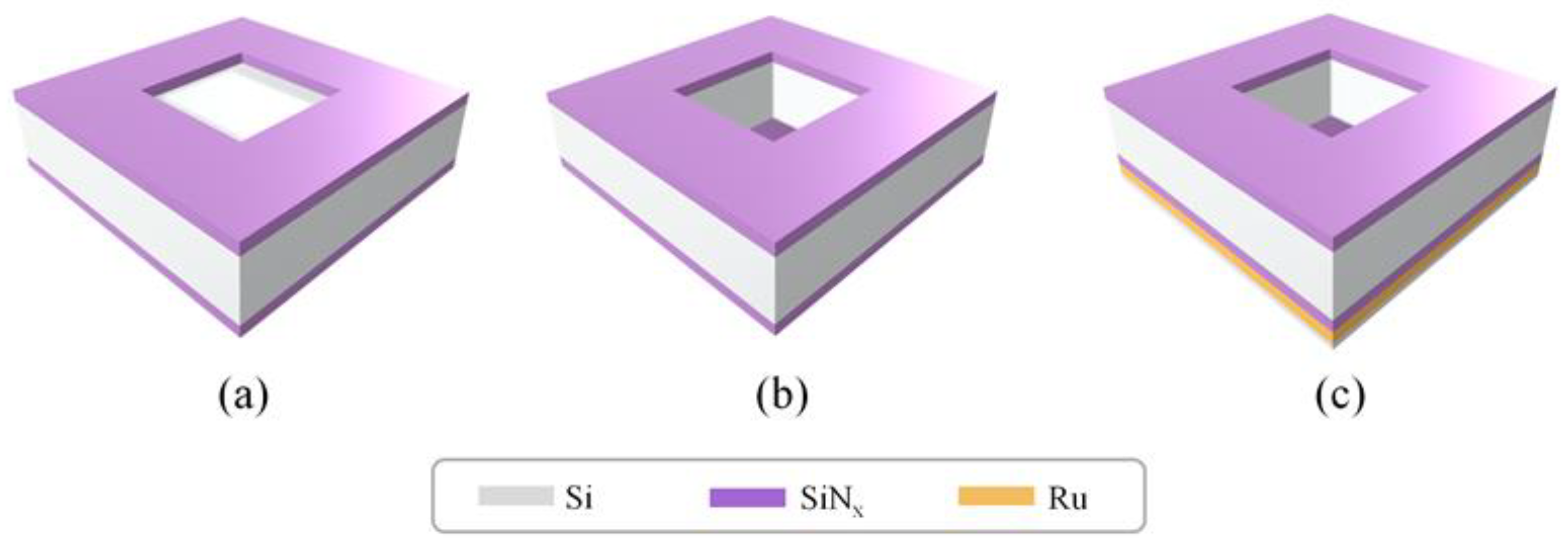
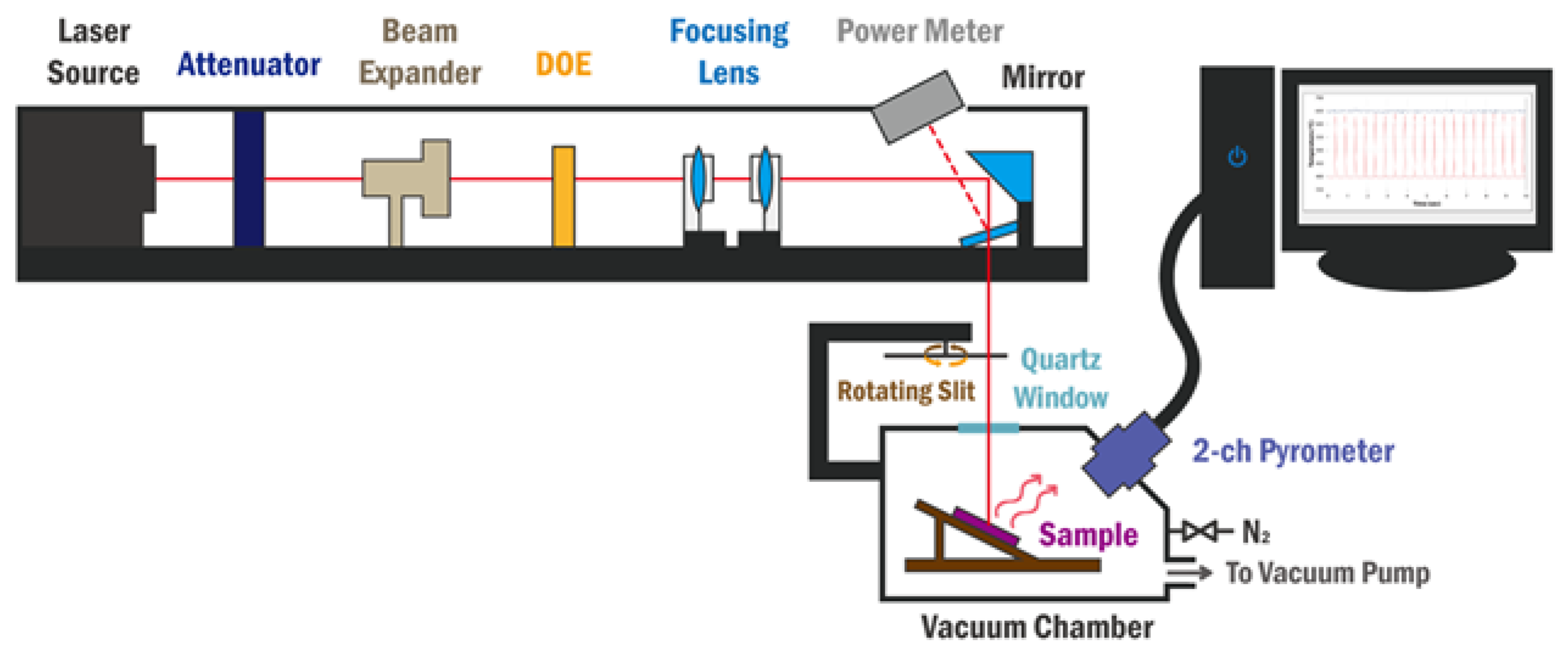
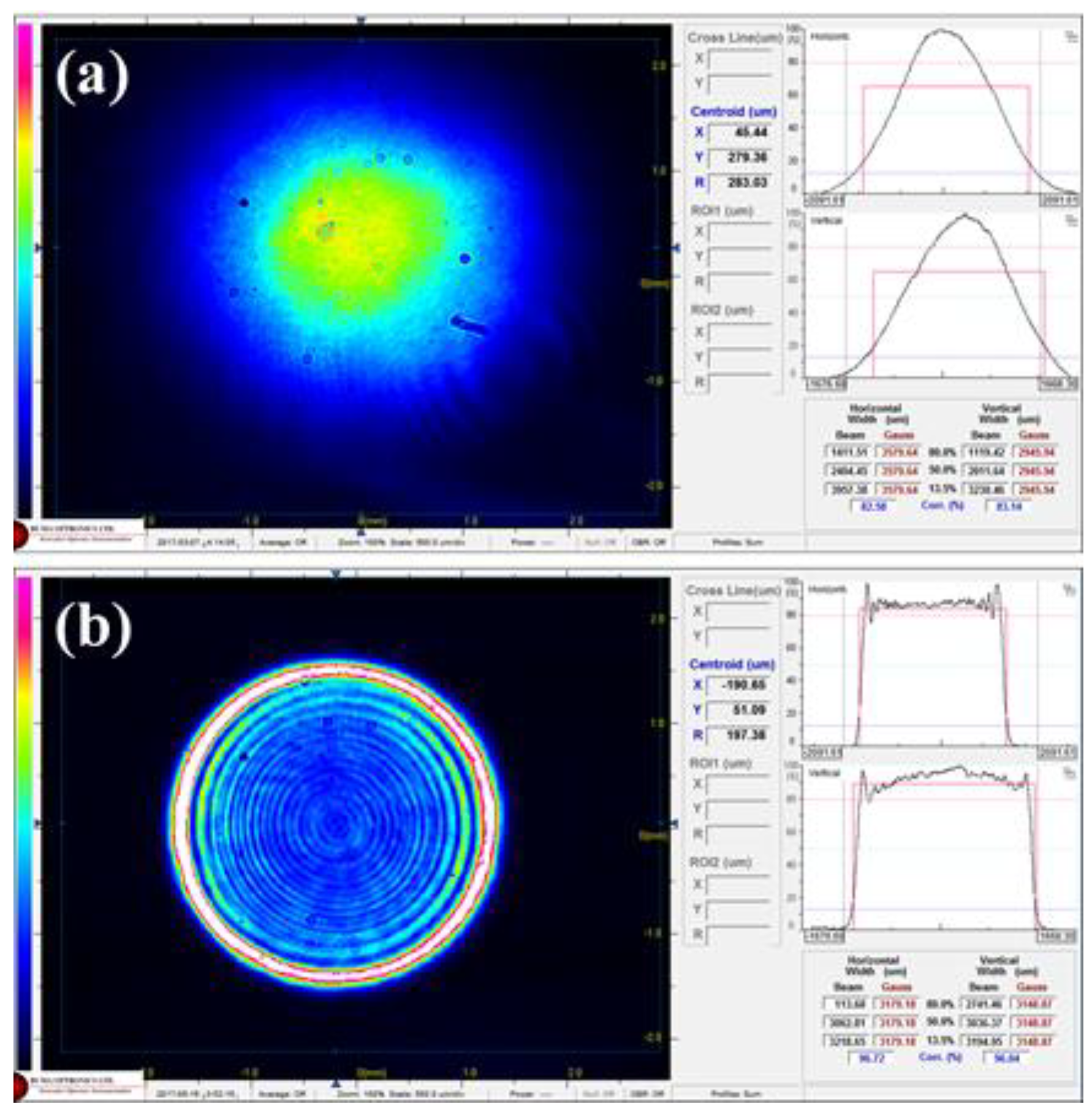
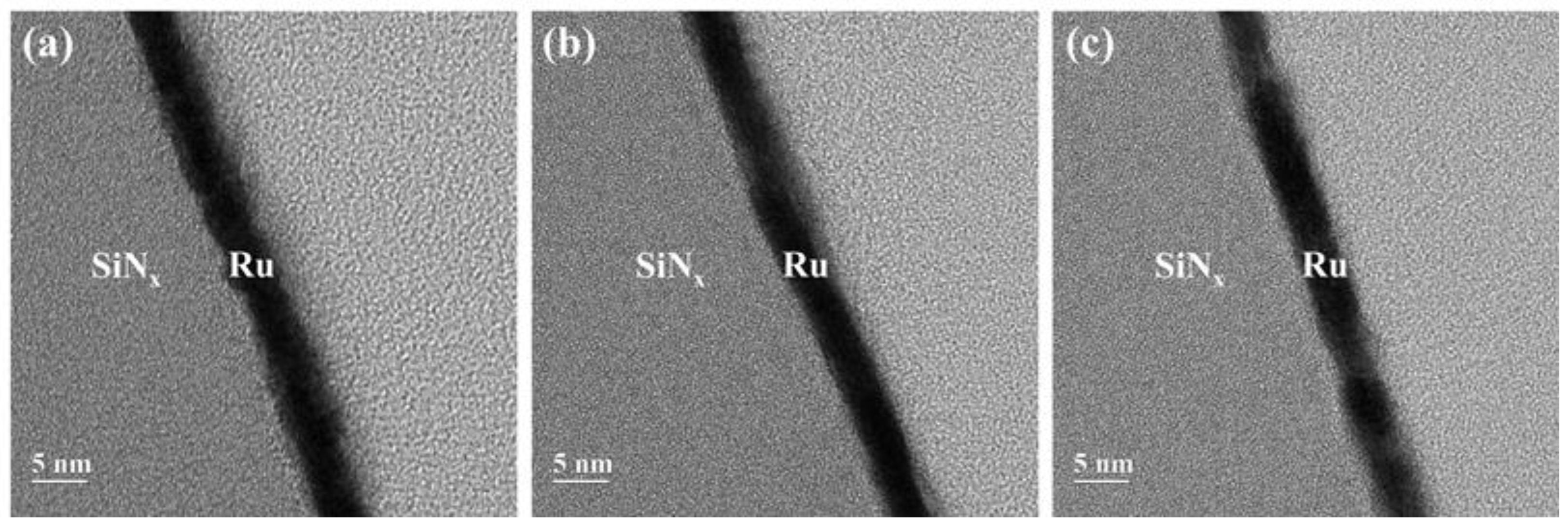
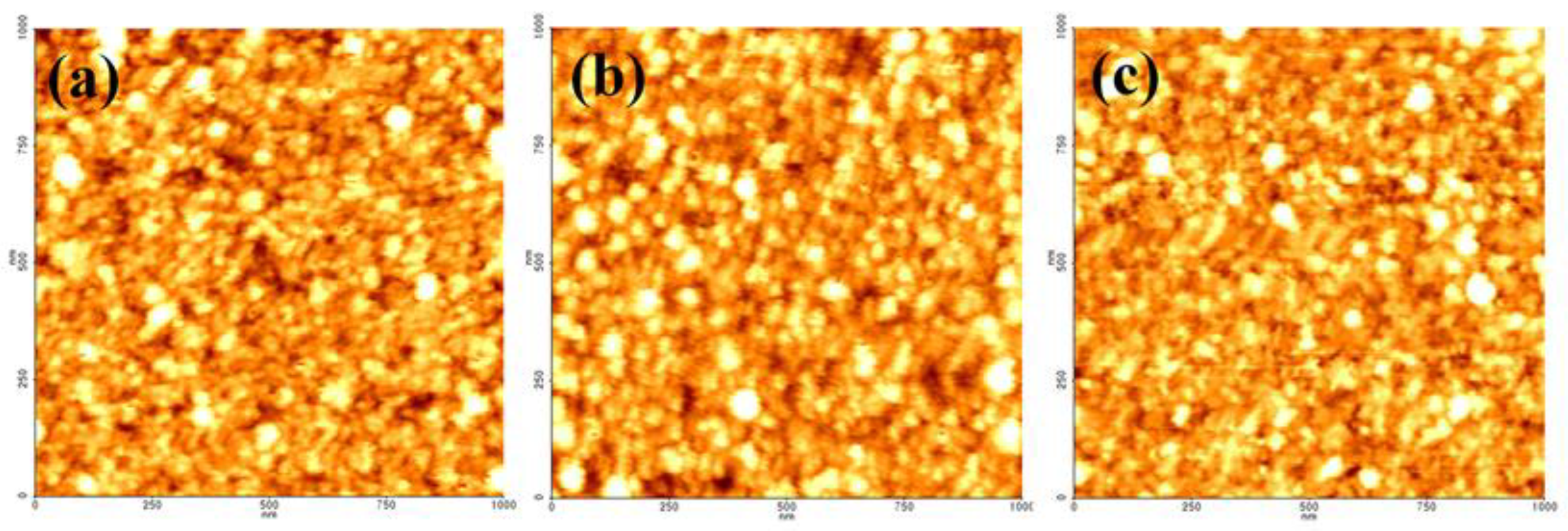

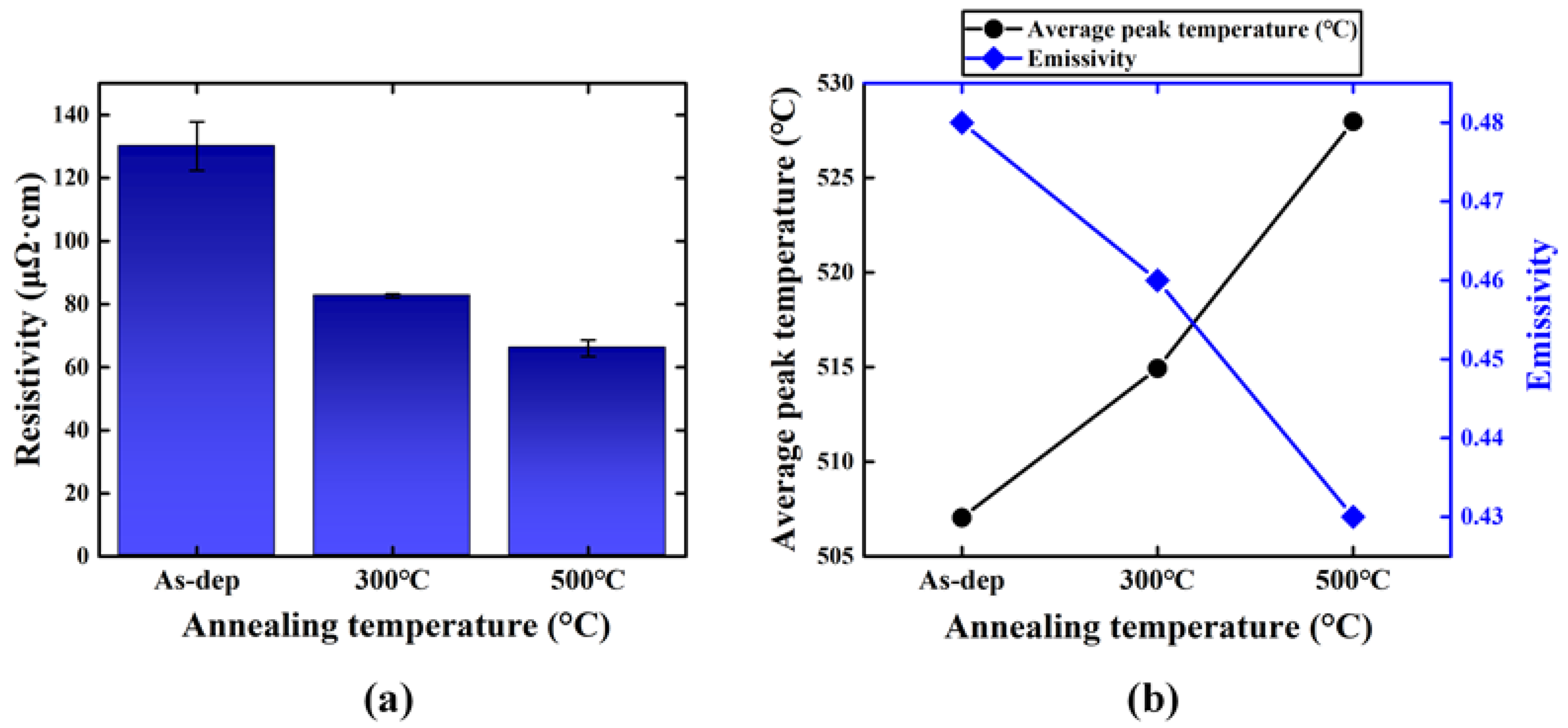
Publisher’s Note: MDPI stays neutral with regard to jurisdictional claims in published maps and institutional affiliations. |
© 2022 by the authors. Licensee MDPI, Basel, Switzerland. This article is an open access article distributed under the terms and conditions of the Creative Commons Attribution (CC BY) license (https://creativecommons.org/licenses/by/4.0/).
Share and Cite
Wi, S.J.; Jang, Y.J.; Kim, H.; Cho, K.; Ahn, J. Investigation of the Resistivity and Emissivity of a Pellicle Membrane for EUV Lithography. Membranes 2022, 12, 367. https://doi.org/10.3390/membranes12040367
Wi SJ, Jang YJ, Kim H, Cho K, Ahn J. Investigation of the Resistivity and Emissivity of a Pellicle Membrane for EUV Lithography. Membranes. 2022; 12(4):367. https://doi.org/10.3390/membranes12040367
Chicago/Turabian StyleWi, Seong Ju, Yong Ju Jang, Haneul Kim, Kyeongjae Cho, and Jinho Ahn. 2022. "Investigation of the Resistivity and Emissivity of a Pellicle Membrane for EUV Lithography" Membranes 12, no. 4: 367. https://doi.org/10.3390/membranes12040367
APA StyleWi, S. J., Jang, Y. J., Kim, H., Cho, K., & Ahn, J. (2022). Investigation of the Resistivity and Emissivity of a Pellicle Membrane for EUV Lithography. Membranes, 12(4), 367. https://doi.org/10.3390/membranes12040367





